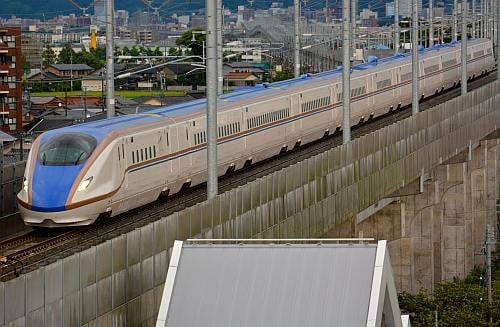Funding for studies will be included in the budget for the 2016 financial year with the aim of identifying a preferred route option in 2017.
The initial 228km section of the Hokuriku Shinkansen from Nagano to Kanazawa opened in March and the 120.7km Kanazawa - Tsuruga extension is due to be completed in 2022.
In 1973 the Japanese government approved a plan to build five Shinkansen lines across the country and the Tsuruga - Shin-Osaka line is the only section of this network where construction has not yet begun.
A previous study by the Union of Kansai Governments looked at three potential route options for the extension. The shortest proposed route would link Tsuruga with Maibara, a distance of just 44km, but this would require through running on the Tokaido Shinkansen to reach Kyoto and Shin-Osaka, which is considered to be operationally challenging due to the high levels of traffic on this line. A second 81km route option would take the line west of Lake Biwa through Kosei to Kyoto. The third option being considered is a 123km route via Obama to Shin-Osaka. The Union favours the Maibara route, but the other routes also have political support.
The project is likely to be a long-term one as the government has prioritised the 211km second phase of the Hokkaido Shinkansen from Shin-Hakodate to Sapporo, which is due to open in 2030.
In order to extend the benefits of the Hokuriku Shinkansen to stations west of Tsuruga before the line to Osaka is completed, JR West is working in partnership with Talgo on the development of a Free Gauge Train (FGT), which will be capable of operating under both the 25kV ac electrification used on the Shinkansen and the 1.5kV dc system employed on conventional lines. The six-car train is due to start trials on the Hokuriku Shinkansen and the 1067mm-gauge Hokuriku and Kosei lines in 2017. As part of the project JR West has already began trials with a purpose-built 180m-long gauge-changer at Tsuruga.

